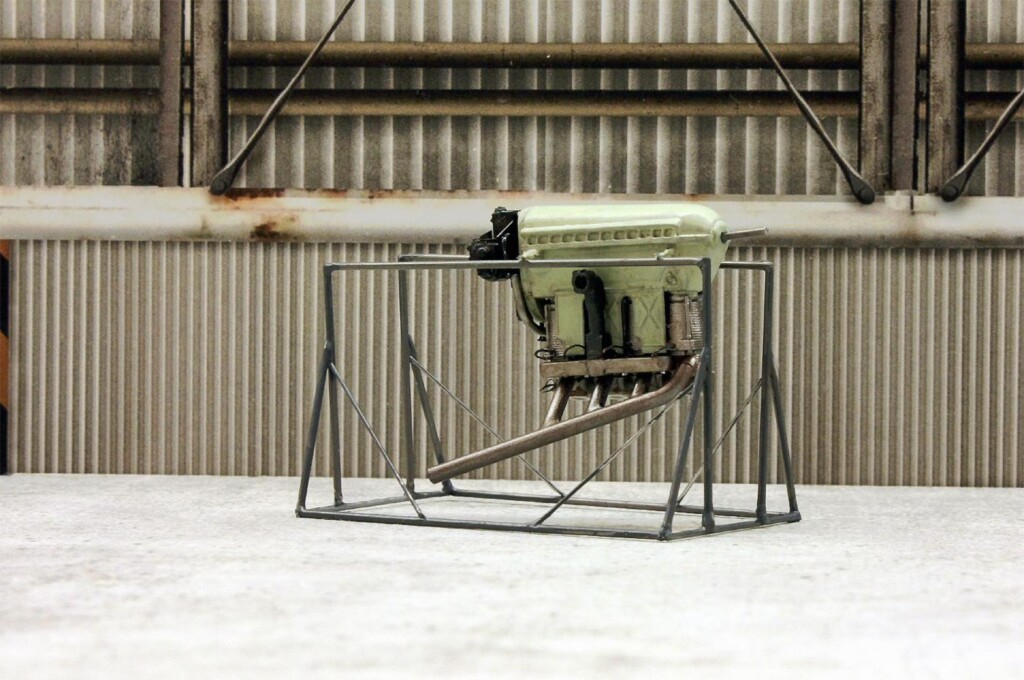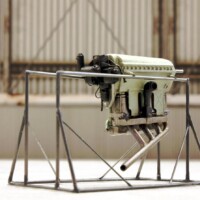15 minutes of fame for a de Havilland Gipsy Major I or: from the spotlight into the darkness. A detailed story from the construction of the Miles Magister by Mikro Mir.
Do you know this too? Sometimes kits contain whole jewels of modelling, such as a wonderfully reproduced radio equipment, a detailed navigator's workstation or a promisingly detailed engine, which then in the further building process are simply to be walled up in closed fuselages and sealed engine cowlings - and thus disappear from view. A dilemma - and somehow a pity!
Recently, while I was working on the construction of a Miles Magister by Mikro Mir, I had an idea how to deal with this circumstance. Again, a very well represented engine, refined with etched parts, is to be built into the thick-walled half-shells of the engine cowling.
Since the parts of the engine looked really tempting and I could just do with a little variety, I decided without further ado to build the engine to the best of my ability in as much detail as possible, so that I could then document it photographically in a suitable environment. On that I would be able to let it disappear with a clear conscience into the darkness of the closed engine cowling. This way I would have had a bit of modelling fun - and the pictures would remind me of it at any time, so the effort would not seem completely wasted.
The de Havilland Gipsy Major is an engine with a really interesting and long history. The reliable engine was installed in a wide range of aircraft from the early 1930s onwards and has built up an excellent reputation over many decades as a reliable, economical and easy-to-maintain engine. The number of over 14600 units built alone gives an idea of the success story of the engine, which had been in production since 1932. The engine was further developed in the de Havilland Gipsy Six, another successful model that was to power the famous DH.88 Comet racing and record-breaking aircraft. This will be a project to follow the Miles Magister.
To get an idea of the power of this 6.1 litre engine, here are some key data: the four cylinders of the Gipsy Major, which weighed about 140 kg dry, developed between 120 and 145 hp (at 2100 rpm and 2550 rpm respectively). Also interesting: the fuel consumption amounted to almost 30 litres per hour (at 2100 rpm in cruise flight).
Among the aircraft powered by a Gipsy Major are such well-known aircraft legends as the de Havilland Tiger Moth, de Havilland Dragon, de Havilland DHC.1 Chipmunk or just the widespread trainer Miles Magister, for whose representation this model is built here.
So, and now off into oblivion under the plastic cowling...!













Great article, Roland, it’s similar to building racing cars and motorcycles, the interesting “oily” bits disappear from view.
Thank you for interest and kind reply, George!
Now if I could just find a similar engine for my Lindberg 1/48 Jenny. I want to use this is in a simulation of the Waldo Pepper scene where they are flying down the center of town with Susan Sarandon screaming in a dress. (Yes I know the plane in the movie was not a Jenny).
Great work on the Gypsy Major. The availability of these engines really gives modelers some cool choices. Great idea on doing a photo log on the engine before placing it in the Magister.
Thank you Carl- and good luck with Jenny, Waldo and Susan! 🙂
Nice story and beautifully built engine, Roland!
Did you build that mounting rack from scratch?
Greetz.
Thank you for the comment. Yes, it was a quick decision and without a real template - as you can probably see! 🙂
Very nice - and a great way to memorialize such a fine bit of modeling before being hidden under layers of styrene!
Thank you Greg!
Great article and beautiful way to present this beautiful engine, Roland @rosachsenhofer
It will always be a pity to hide those objects.
Comments and interest are appreciated, thank you, John!
Amazing job, Roland! An awesome idea to represent the engine! Fantastic article, as usual!
Thenak you Spiros, your words are appreciated!